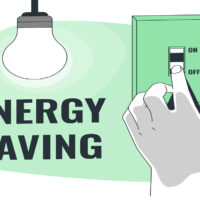LED lighting refers to the use of light-emitting diodes to produce illumination. It is known for energy efficiency and longevity.
LED technology has revolutionized the lighting industry with its exceptional energy savings and versatile applications. These lights convert electricity to light more efficiently than traditional incandescent bulbs, leading to significant cost savings over time. Not only do LEDs reduce energy consumption, but they also boast a longer lifespan, often lasting thousands of hours before needing replacement.
This durability makes LED lights an eco-friendly choice, as they lessen waste and reduce the frequency of replacements. Homeowners and businesses alike are switching to LED lighting to take advantage of its low maintenance, high-quality light output, and decreasing purchase costs. With a variety of color temperatures and designs, LED lights offer flexibility for both functional and aesthetic lighting solutions in residential, commercial, and industrial settings.

Advantages Of LED Lighting
LED lights are a bright choice for anyone keen on efficiency and innovation. With a bundle of benefits, they stand out in the world of lighting. Let’s explore these benefits further.
Energy Efficient
LED lights consume less power than traditional bulbs. They use up to 80% less energy compared to incandescents. This means big savings on electricity bills. The table below illustrates the comparison:
| Lighting Type | Average Consumption | Energy Saving |
|---|---|---|
| LED | 10W | 80% less |
| Incandescent | 60W | 0% |
Long Lifespan
LEDs have a longer lifespan than typical bulbs. They shine for up to 50,000 hours. That’s 50 times longer than incandescent! Below is a list comparing lifespans:
- LED: 50,000 hours
- Incandescent: 1,000 hours
- CFL: 8,000 hours
Eco-friendly
LEDs are free from toxic chemicals like mercury. They are 100% recyclable which helps reduce carbon footprints. A step forward for a greener planet!
Versatility
LEDs fit various applications due to their versatility. They come in multiple colors and designs. Users have options for dimming and color changing. LEDs work for indoor, outdoor, and special lighting needs.
Durability
Built to last, LEDs withstand rough conditions. They are resistant to shock, vibrations, and external impacts. They perform well in extreme temperatures and weather scenarios.

Applications Of LED Lighting
LED lighting is not just bright and energy-efficient. It lights up different aspects of our lives. From cozy homes to towering skyscrapers, LED complements every space.
Let’s explore the places LED lighting shines:
Residential
- Kitchen task lights
- Warm bedroom ambiance
- Living room spotlights
Homes become cozier and bills drop. LEDs offer long-lasting solutions for comfortable living areas.
Commercial
| Space | LED Application |
|---|---|
| Offices | Uniform, glare-free lighting |
| Retail | Highlight products with spotlights |
| Warehouses | Energy-efficient, high-bay fixtures |
LEDs reduce costs and enhance workspace efficiency.
Outdoor
- Street lamps for Safer Roads
- Garden lights for enchanting yards
- Stadium lighting for clear viewing
Outdoor LED lighting cuts energy use and keeps the night alive.
Automotive
- Headlights
- Dashboard lights
- Signal lights
LEDs in cars improve visibility for drivers and safety on the roads.
Medical
- Surgical lighting
- Hospital room lighting
- Specialized equipment
LED lighting supports vital medical procedures and patient care.
Types Of LED Lighting
LED lighting has transformed how we illuminate our spaces, from homes to offices to streets. This energy-efficient technology comes in various forms to suit different needs. Below is a glimpse of the most popular types of LED lighting.
Led Bulbs
LED bulbs are the standard go-tos for direct replacement of incandescent bulbs. They deliver long-lasting, high-quality light with minimal energy use. These bulbs fit into common fixtures, making them an easy swap for instant savings.
Led Tubes
LED tubes shine in places where traditional fluorescent tubes once ruled. Think garages, offices, and supermarkets. Their superior lifespan and lower energy consumption make them a smart choice.
Led Panels
LED panels provide a modern look with their sleek design and even light distribution. Great for drop ceilings, they’re typically found in commercial settings. They brighten spaces while cutting down on costs.
Led Strips
LED strips add a creative touch to any space. Flexible and adhesive-backed, they go anywhere. Under cabinets, along stairways, or behind TVs, they offer ambiance and versatility.
Others
The world of LED doesn’t stop there. Consider these unique options:
- LED Downlights: Perfect for focused lighting.
- LED Floodlights: Excellent for outdoor and security lighting.
- LED Track Lighting: Ideal for accentuating features within a space.
Factors To Consider When Buying Led Lights
When shopping for LED lights, it’s crucial to pick the perfect options for your space. LED lights save energy and last longer than traditional bulbs. Each light bulb has multiple factors to keep in mind. This guide will ensure you choose the right LED lights for any room, occasion, or mood.
Brightness
Lumens measure brightness. More lumens mean more light. Check the lumens to tell how bright your LED will shine. Compare lumens between bulbs for the best choice.
Color Temperature
Color temperature changes a room’s feel. Measured in Kelvins, the scale runs from warm to cool. Lower Kelvins are warmer, and higher are cooler, like daylight.
Size And Shape
Different fittings need different bulbs. Match the base size and shape to your fixture. LED lights come in various styles: A-line, candle, globe, and more.
Dimming Capability
Not all LEDs dim. If you want adjustable light levels, pick a dimmable LED. Ensure it’s compatible with your dimmer switch to avoid flickering.
Price
LEDs cost more upfront but save money over time. Compare prices but consider longevity and energy savings. Look for long-term value not just the initial cost.
Installation And Maintenance Of LED Lighting
LED lighting has changed how we light up our spaces. Installation and maintenance are vital for their performance. This guide breaks down the process step by step.
Installation
Setting up LED lighting is simple. Follow these steps for a proper setup:
- Select the right type of LED light for your space.
- Turn off power to the area to ensure safety.
- Remove existing fixtures carefully.
- Securely fasten the LED fixture into place.
- Connect wires correctly – color to color.
- Switch on power and test the LED light.
| Type of LED light | Location |
|---|---|
| Bulbs | Table lamps, Ceiling Fixtures |
| Strips | Under cabinets, Shelves |
| Panels | Offices, Kitchens |
Maintenance
LED lights need little care. Keep them running smoothly with these tips:
- Dust off LED fixtures regularly.
- Replace flickering lights promptly.
- Ensure outdoor LEDs are weather-protected.
- Check for wiring issues annually.
Safety Precautions
Your safety is paramount. Remember to:
- Turn off the power source first.
- Wear gloves and safety goggles.
- Use a sturdy ladder for high places.
- Read the manufacturer’s instructions.
- Hire a professional for complex installations.

The Future Of LED Lighting
The future shines bright with LED lighting. As the era of traditional bulbs fades away, LED lights take center stage. They promise to change how we illuminate our world. Let’s explore what’s on the horizon for this revolutionary technology.
Advancements In Technology
LED lighting technology is evolving rapidly. The latest innovations include:
- Higher efficiency bulbs that use even less power.
- Improved color rendering, making colors more vibrant.
- Smart LED systems you can control with your phone.
These advancements lead to brighter, more customizable, and smarter lighting solutions. They ensure that LED lights will remain a key player in the lighting industry.
Growing Popularity
People everywhere are switching to LEDs. A simple comparison shows why:
| LEDs | Traditional Bulbs |
|---|---|
| Last up to 25 times longer | Need frequent replacement |
| Save up to 80% energy | Less energy-efficient |
| Emit less heat | Can get very hot |
With benefits like these, it’s easy to see why LED lighting is becoming the standard.
Impact On The Environment
LED lights have a positive effect on our planet. Their environmental benefits include:
- Reducing greenhouse gas emissions by using less electricity.
- Lowering carbon footprints due to longevity.
- Minimizing light pollution, protecting our night skies.
This makes LED lighting not just a choice for today but a commitment to a healthier future.
Frequently Asked Questions On LED Lighting
Is There A Downside To Led Lights?
LED lights offer numerous benefits, but they do have some drawbacks. These include a higher upfront cost, potential flickering issues, sensitivity to high temperatures, and blue light emission that may affect sleep patterns.
What Does Led Lighting Do?
LED lighting provides efficient illumination by converting electricity into light using semiconductors. It offers energy savings, long life, and diverse color options.
Why Are Led Lights Better?
LED lights are more energy-efficient, last longer, and offer better durability and safety compared to traditional lighting. They generate less heat, reducing cooling costs and the risk of combustion.
How Is A Led Better Than A Bulb?
LEDs are more energy-efficient, have a longer lifespan, and operate cooler than traditional bulbs, leading to lower electricity bills and less frequent replacements.
Conclusion
Embracing LED lighting transforms spaces and saves energy. Its long life and efficiency make it a wise choice for anyone seeking sustainable, cost-effective illumination. As this lighting technology continues to evolve, embracing LED is not just a bright idea—it’s a brilliant investment for a sustainable future.




